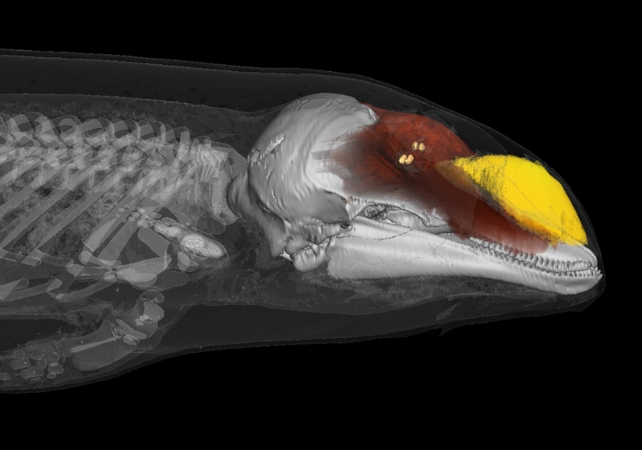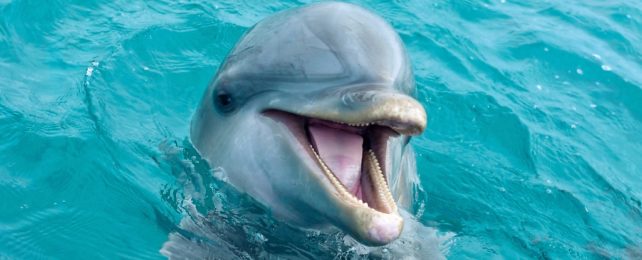One of Kim Kardashian's trademarks is her vocal fry, a creaky voice affectation that studies have suggested is deeply polarizing for humans.
But a new study has found that actors and celebrities aren't the only ones to use voice modulation to impress – toothed whales like dolphins, orcas, and sperm whales, are also able to create a vocal fry.
In their case, it's a vital tool that allows them to hunt even in the depths of the ocean.
And to do so, they use a newly-discovered set of lips, that was hiding in their nose the whole time.
A vocal fry is a crucial tool for deep-diving whales
To be able to do the characteristic valley girl vocal fry espoused by Kardashian, Britney Spears, Paris Hilton, and others, you need to be able to modulate your voice.
"Vocal fry is a normal voice register that is often used in American English. Kim Kardashian, Katy Perry and Scarlett Johannson are well-known people using this register", said Coen Elemans, professor of sound communication and behavior at the University of Southern Sweden and an author on the study, in a press release.
"Registers basically means very distinct ways of vibrating the same vocal cords," added Elemans in an interview with Insider.
Humans typically have access to three registers: the heady, high-pitched falsetto, the normal voice, and the chesty voice, which is where the vocal fry lives.
By analyzing the sounds that the whales made, the scientists who worked on the study found that the whales use very similar modulation in their voice. This gives them access to falsetto, which allows them to make their high-pitched whistles, and the chesty, vocal fry range, which is how they make echolocation.
Still, there was a puzzle that this didn't solve. Scientists have always been quizzical about how whales could echolocate at huge depths.
Sperm whales and beaked whales can dive to depths of almost 10,000 feet (3048 meters). At those depths, the pressure of the water is immense, so much so that air gets compressed.
"For whales at a thousand meters, there's less than 1 percent of the air volume available compared to what was available at the surface," Peter Teglberg, professor of physiology at the Aarhus University in Denmark and an author on the study, told Insider.
The whales redirect that air straight to their muscles to stay alive, and their lungs are emptied to avoid diving sickness.
How then, can whales produce the loud clicks that are needed for echolocation without air? "My sort of motivation to go into this is very much driven by that paradox," said Teglberg.
A nasal voice takes a whole different meaning
Teglberg and his colleagues spent decades studying the anatomy of live trained dolphins, tracking the noises of live whales, and using the remains of animals found dead on the beach to understand how they managed to produce a noise at that depth.
They finally cracked it, after two decades of work. Toothed whales, they found, redirect the little air they have in their lungs to a pouch in their nose, called the nasopharyngeal sac.
The air from the pouch bypasses the lungs and the vocal cords completely.
"These animals have evolved a new sound production organ in their nose and don't use the larynx," said Elemans.
Instead, to make the loud clicks to echolocate, the whales pushed the air through membranes in the sac, called "phonic lips," that make a deafening sound when they are smacked together.
"You can think of it as a balloon, basically. If you blow up a balloon and then you tighten the nozzle, you can make it squeak," said Teglberg.

An affectation that shaped toothed whales' evolution
Teglberg and Elemans say this has very much influenced the way dolphins, orcas, and other toothed whales evolved a "Mona Lisa" fixed smile on their face.
"Whales have very detailed control over these sounds at the cost of having zero facial expression. The modern nerves that are normally used for this are in fact in the sound production system," said Elemans.
"While vocal fry may be controversial in humans and may be perceived as everything from annoying to authoritative, it doubtlessly made toothed whales an evolutionary success story", Elemans adds.
The study was published in the journal Science on Thursday.
This article was originally published by Business Insider.
More from Business Insider: